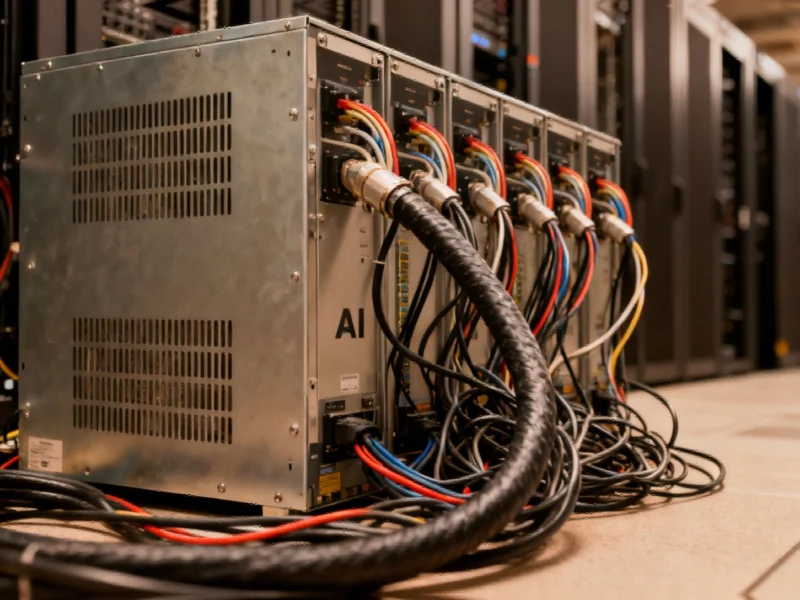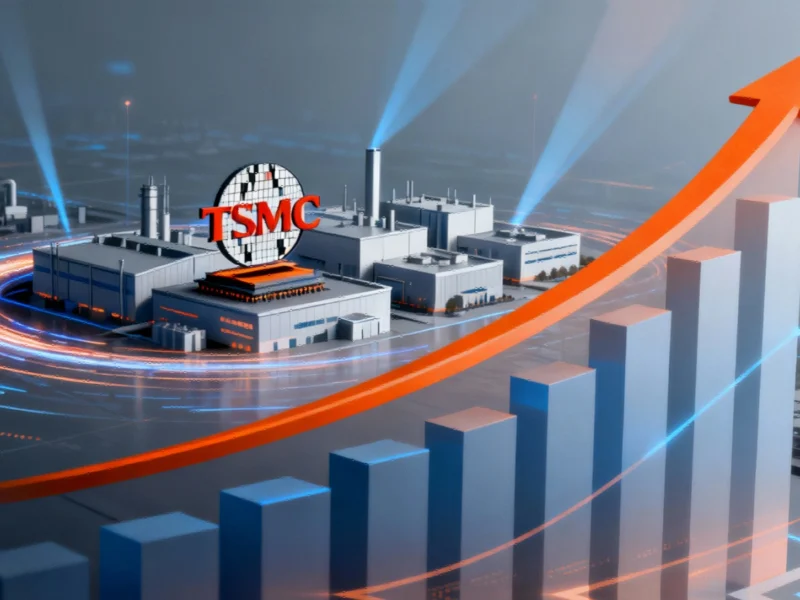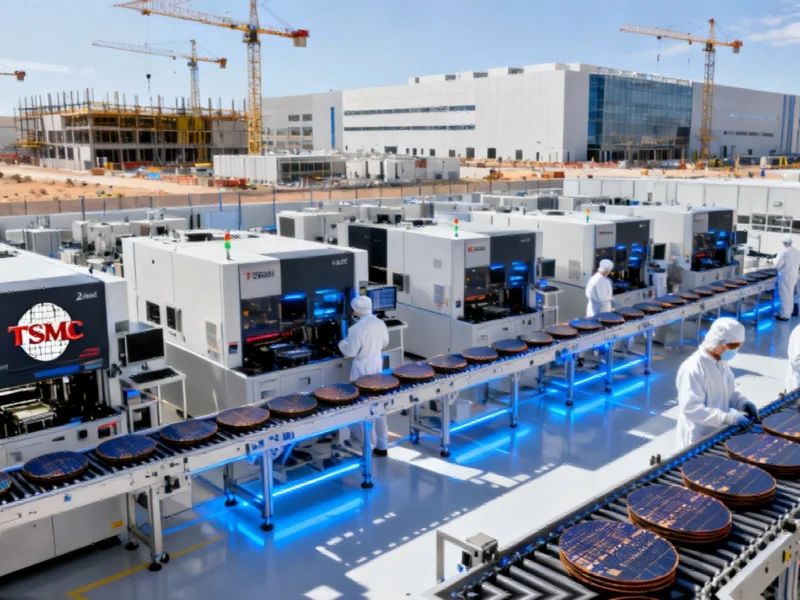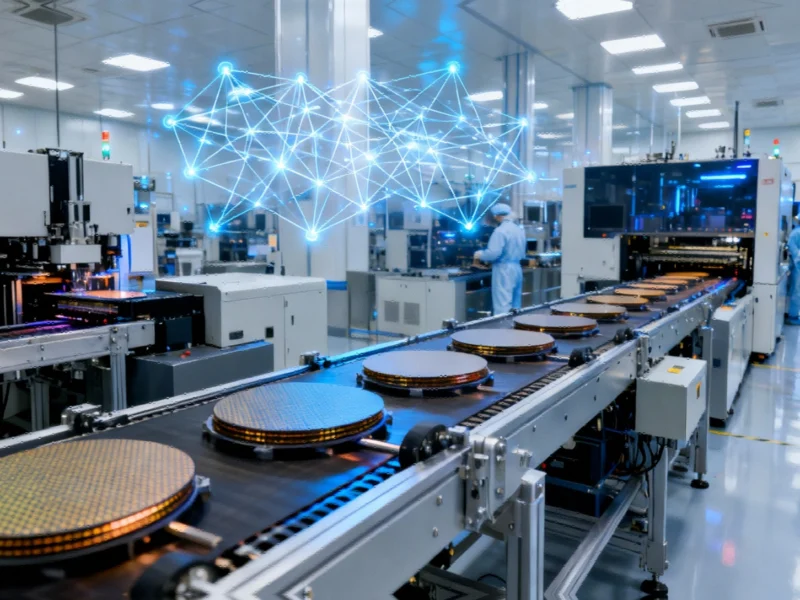In a landmark partnership that could reshape the future of artificial intelligence infrastructure, Nvidia and Infineon have announced a collaborative effort to overhaul the power architecture of AI data centers. This strategic alliance, as detailed in recent industry reports, aims to replace the current chaotic web of power cables with a streamlined high-voltage DC power system that could fundamentally change how we power next-generation computing.
The Power Crisis in AI Infrastructure
The collaboration comes at a critical juncture for the AI industry, where power demands have reached unprecedented levels. Modern GPUs now consume more than 1 kilowatt of power per chip, creating a cascade of challenges throughout data center infrastructure. According to Infineon’s analysis, power requirements per rack have skyrocketed from an average of 120 kilowatts to 500 kilowatts in just a few years, with projections indicating these demands will exceed one megawatt before 2030.
The current approach of adding multiple power supplies to each rack has created what engineers describe as a “spaghetti cluster” of cables that not only occupies valuable space but also generates excessive heat and increases failure points. This power delivery crisis mirrors similar infrastructure challenges faced across the tech industry, from content platforms implementing advanced AI features to streaming services optimizing their delivery systems.
The High-Voltage DC Solution
The proposed solution centers on implementing a centralized high-voltage DC power distribution system that would eliminate the need for numerous individual power supplies within each rack. This approach represents a fundamental shift from current AC power distribution methods that have remained largely unchanged for decades.
Infineon’s Power & Sensor Systems division brings specialized expertise in power management to the partnership, while Nvidia contributes its deep understanding of AI workload requirements and GPU power characteristics. The collaboration aims to develop a standardized high-voltage cable system that could reduce power conversion losses by up to 20% while significantly improving reliability.
Industry-Wide Implications
This power infrastructure revolution arrives as the broader technology ecosystem faces similar scaling challenges. The initiative parallels developments in other sectors, including streaming service partnerships that are rethinking content delivery infrastructure and cloud gaming platforms expanding their service capabilities.
The timing is particularly crucial as AI models grow exponentially in size and complexity. Current power delivery limitations threaten to become a bottleneck for AI advancement, making this collaboration potentially one of the most significant infrastructure developments in recent computing history.
Technical Implementation Challenges
Implementing high-voltage DC power distribution in existing data centers presents substantial engineering challenges. The transition requires developing new safety protocols, retraining personnel, and creating backward-compatible solutions for legacy equipment. However, the potential benefits justify the investment:
- Space Optimization: Eliminating multiple power supplies per rack could free up to 30% more space for computing hardware
- Energy Efficiency: Reduced power conversion stages could improve overall energy efficiency by 15-20%
- Reliability Improvement: Fewer components and connections mean reduced failure rates
- Heat Reduction: Consolidated power conversion decreases thermal load on cooling systems
Broader Technology Ecosystem Impact
The implications of this power delivery breakthrough extend beyond AI data centers. Similar infrastructure improvements could benefit multiple technology sectors, from operating system enhancements requiring efficient power management to security applications leveraging universal hardware interfaces. Even cybersecurity infrastructure could benefit from more reliable power delivery systems.
The partnership represents a growing recognition that sustainable AI advancement requires rethinking fundamental infrastructure elements. As AI models continue their exponential growth, power delivery may become the defining challenge of the next computing era, making initiatives like the Nvidia-Infineon collaboration crucial for maintaining technological progress.
Future Outlook and Industry Adoption
Industry analysts predict that successful implementation of this high-voltage DC power architecture could set new standards for data center design worldwide. The collaboration between Nvidia and Infineon signals a shift toward holistic solutions that address the entire computing ecosystem rather than isolated components.
Early adoption is expected to begin with new AI data center construction, with retrofitting existing facilities following as the technology matures. The partnership’s success could inspire similar cross-industry collaborations addressing other infrastructure bottlenecks in the rapidly evolving computing landscape.
As the AI revolution continues to accelerate, foundational improvements in power delivery infrastructure may prove as important as algorithmic advances in determining the pace and scope of artificial intelligence development in the coming decade.
Based on reporting by {‘uri’: ‘networkworld.com’, ‘dataType’: ‘news’, ‘title’: ‘Network World’, ‘description’: ‘Network news, trend analysis, product testing and the industry’s most important blogs, all collected at the most popular network watering hole on the Internet | Network World’, ‘location’: {‘type’: ‘place’, ‘geoNamesId’: ‘4930956’, ‘label’: {‘eng’: ‘Boston’}, ‘population’: 617594, ‘lat’: 42.35843, ‘long’: -71.05977, ‘country’: {‘type’: ‘country’, ‘geoNamesId’: ‘6252001’, ‘label’: {‘eng’: ‘United States’}, ‘population’: 310232863, ‘lat’: 39.76, ‘long’: -98.5, ‘area’: 9629091, ‘continent’: ‘Noth America’}}, ‘locationValidated’: False, ‘ranking’: {‘importanceRank’: 280964, ‘alexaGlobalRank’: 23118, ‘alexaCountryRank’: 11344}}. This article aggregates information from publicly available sources. All trademarks and copyrights belong to their respective owners.



